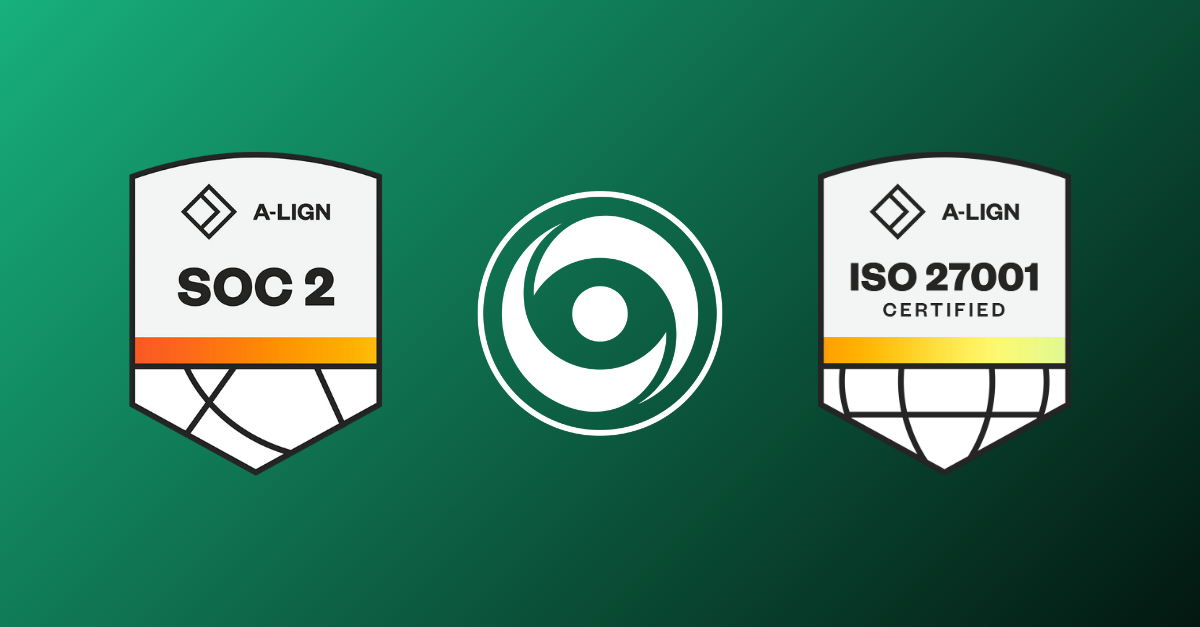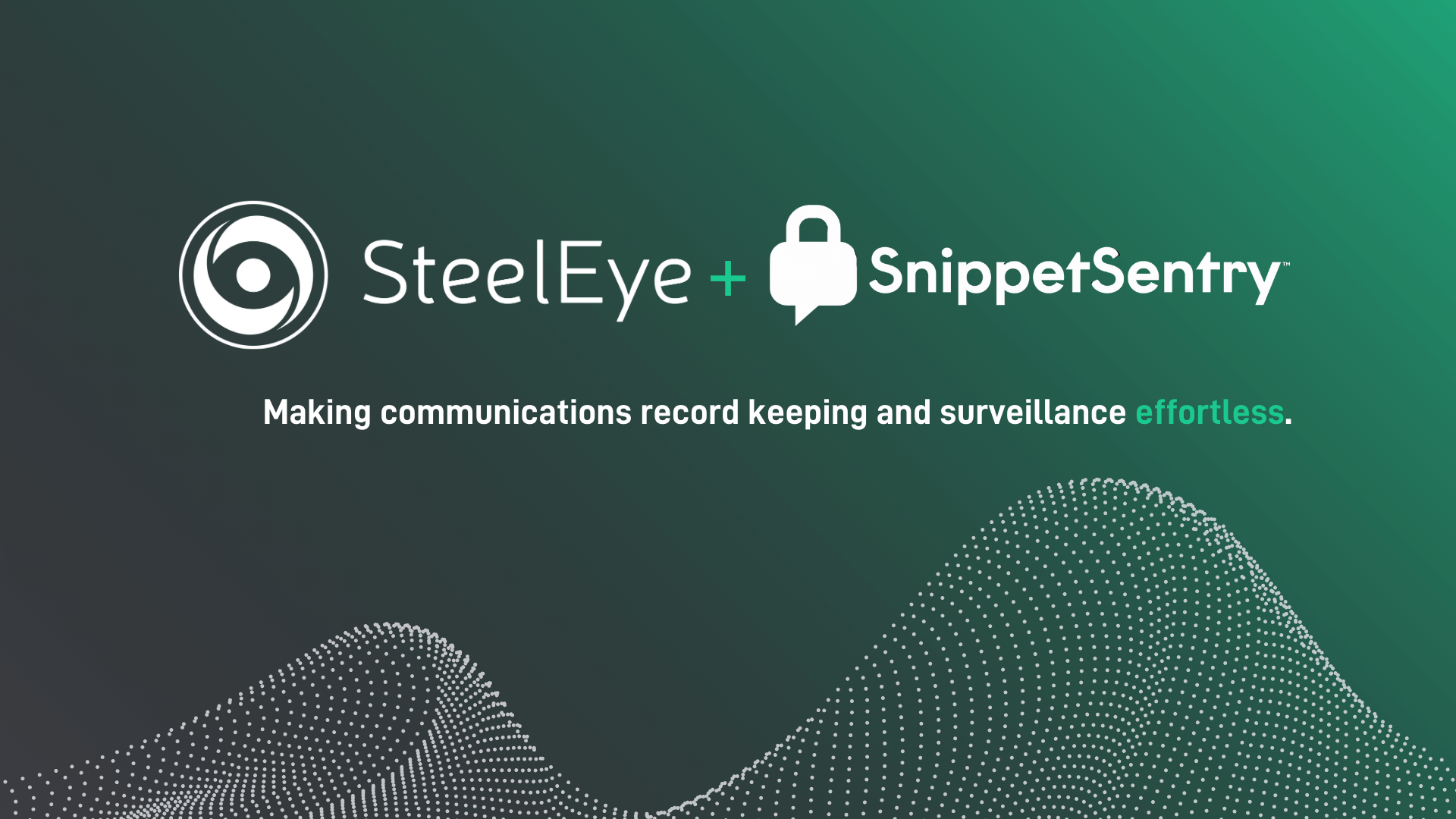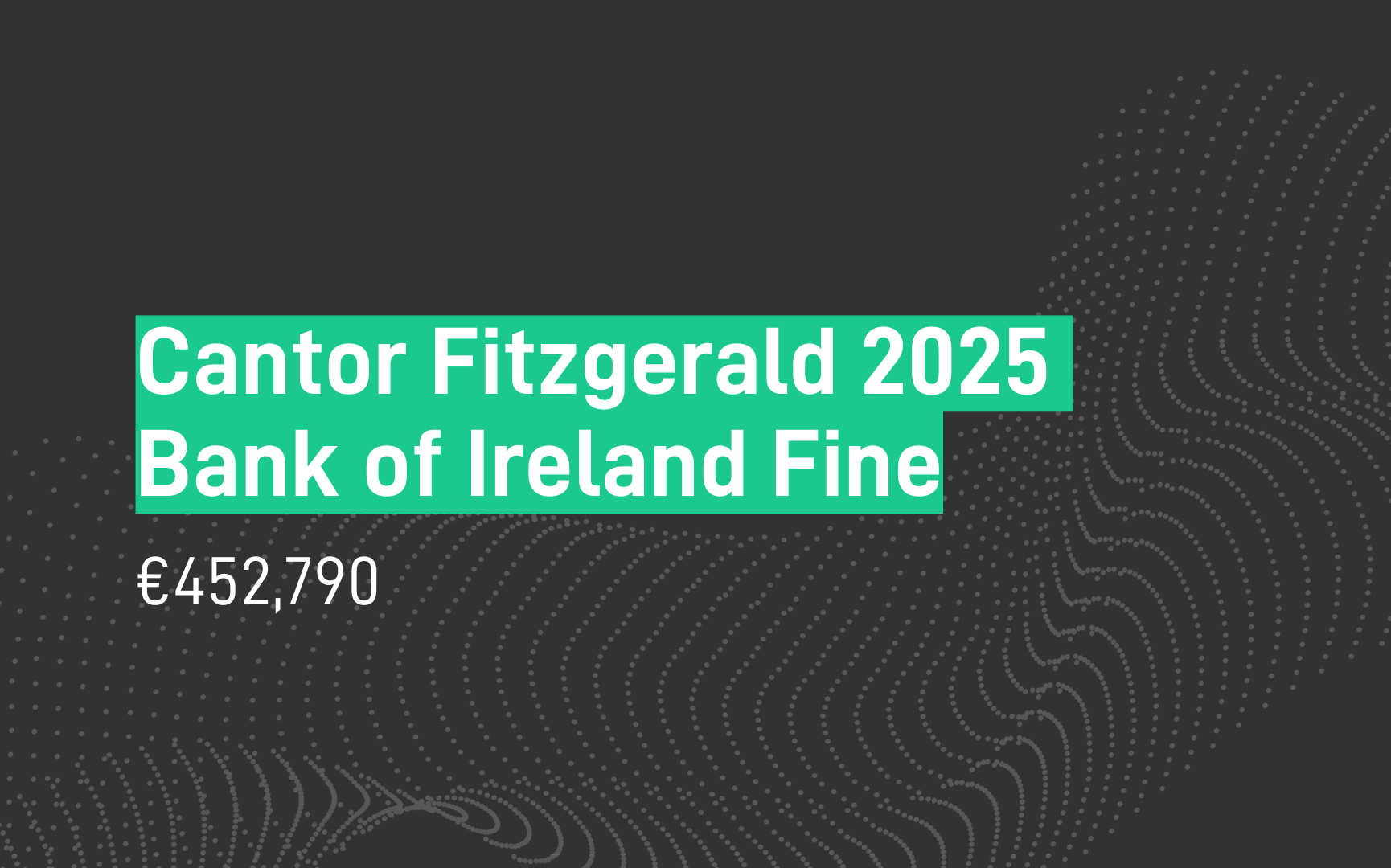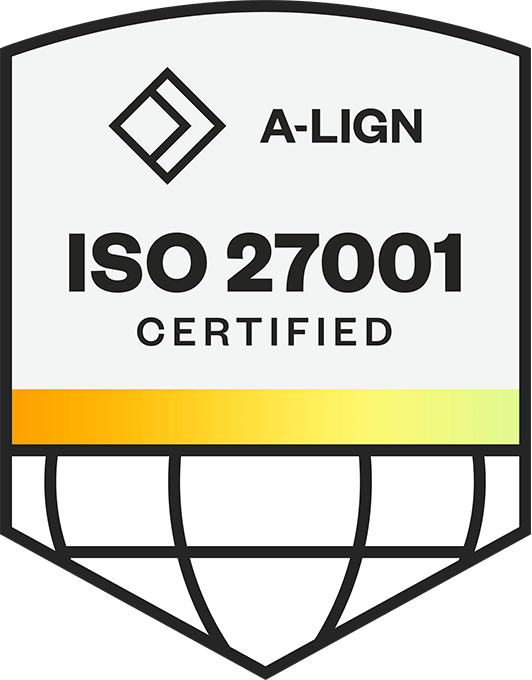
Integrated (or “Holistic”) Surveillance has been a hot topic in the industry for several years. The view is that bringing together disparate data sets and analysing them holistically will lead to enhanced risk mitigation and business insights. However, due to the significant investment required to get it right, many smaller firms have not yet jumped on the bandwagon and started investing in an integrated programme for surveillance.
Yet, effortless access to information is key for agility as it allows firms to identify opportunities quickly. Scattered data on the other hand impacts the time it takes to respond to threats, market movements and regulatory changes.
To stay ahead of the curve, firms will have to start to seriously think about how to bring together data such as order life-cycle events, communications, market data and enriching reference data. There are no quick fixes, but when executed correctly, Integrated Surveillance in Financial Services is an excellent opportunity to establish a rich, value-adding data-set that can power entire organisations.
In this article, we discuss some of the key themes around Integrated Surveillance and what firms should be prioritising as they approach this practice. As with almost all compliance requirements, it is all about data – and data is forever changing and growing. As such, Integrated Surveillance needs to be approached as a journey instead of a solution.
Topics covered in this blog:
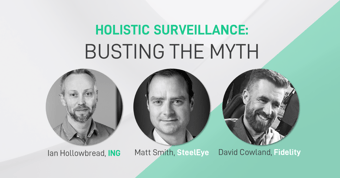 |
What is really Holistic Surveillance, does it exist today and where is it going? This is what experts from Fidelity, ING, and SteelEye discuss in this webinar.
|
What is Integrated Surveillance?
 Before delving into this topic, it is important to first establish what Integrated Surveillance in Financial Services is. For some firms, integrated means stitching together different data sets to improve alerts with better data. For others, it means managing global rules and all of an organisations’ surveillance obligations through a single platform. While there are varying definitions and opinions, we like to look at Integrated Surveillance to overlay complex data sets (such as eComms, vComms, trades, order, market data and more) to enhance compliance monitoring and develop cross-business insight.
Before delving into this topic, it is important to first establish what Integrated Surveillance in Financial Services is. For some firms, integrated means stitching together different data sets to improve alerts with better data. For others, it means managing global rules and all of an organisations’ surveillance obligations through a single platform. While there are varying definitions and opinions, we like to look at Integrated Surveillance to overlay complex data sets (such as eComms, vComms, trades, order, market data and more) to enhance compliance monitoring and develop cross-business insight.

Investing intelligently in Integrated Surveillance in Financial Services
According to experts at the 1LoD eComms Surveillance Deep Dive in 2021, Integrated Surveillance is something most sell-side firms are actively investing in.
It was noted repeatedly, however, that Integrated Surveillance will have limited business value unless firms are able to fundamentally combine infrastructure and data in a scalable manner.
Because of the sheer volume and scale of data produced today and the number of existing and new platforms and systems that process this data, a superficial and patchworked solution for managing different data sources is not sustainable.
Essentially, if Integrated Surveillance in Financial Services is approached purely for the purpose of improving risk detection – this does not justify the huge investment required to successfully integrate complex data sets. However, if firms think about how to build long-term capabilities for combining data for the wider purpose of organising information – this has substantial value in terms of opening opportunities in other parts of the business.
 While regulators do not specify that surveillance needs to be carried out holistically, they are increasingly interested in seeing firms adopt a more integrated framework for dealing with data. This pressure will only increase as technology evolves and regulators themselves enhance their own data management capabilities.
While regulators do not specify that surveillance needs to be carried out holistically, they are increasingly interested in seeing firms adopt a more integrated framework for dealing with data. This pressure will only increase as technology evolves and regulators themselves enhance their own data management capabilities.
Firms need to think strategically about the data-driven technologies they require to combine vast volumes of information – so they can reap the long-term benefits of integrated data. A successful programme needs to be scalable and embed the ability for firms to change, grow and ingest new data sources, platforms, and systems over time. Firms that have not started their journey to build out integrated capabilities should certainly start planning for this now.
How to get Integrated Surveillance in Financial Services right
One of the most important aspects of getting an integrated programme right is figuring out how different data sets meet and interact. For example, how do you link a traders' vComms, with their trades? This involves the unification of the bridging entity (i.e., the Trader), via phone numbers, account-ids, platform-ids etc. This can be extensive data mapping exercise if foundational information is not afforded the required attention.
 If you look at traditional RegTech or surveillance vendors, most approach the regulatory requirements from the perspective of the output – what firms need to report or store. As a result, many have devised prescriptive and inflexible data schemas that financial institution must transform their data to fit before it can be ingested, and the platform or tool can be used. Even if such a platform can ingest both communications and transactions, there is a significant amount of effort required from the financial firm to get their data into the format of the vendor. This approach is expensive, resource-intensive and makes it very difficult for firms to get a return on their investment.
If you look at traditional RegTech or surveillance vendors, most approach the regulatory requirements from the perspective of the output – what firms need to report or store. As a result, many have devised prescriptive and inflexible data schemas that financial institution must transform their data to fit before it can be ingested, and the platform or tool can be used. Even if such a platform can ingest both communications and transactions, there is a significant amount of effort required from the financial firm to get their data into the format of the vendor. This approach is expensive, resource-intensive and makes it very difficult for firms to get a return on their investment.
With growing data volumes and varying formats, the key is to work with technology that can ingest data in any format, that can also capture new channels and sources quickly. Another key consideration as firms try to combine data that has a different format is how to ensure all the relevant metadata is captured and nothing missed. With a rigid data schema, it is nearly impossible to integrate new formats that do not fit the prescribed template – or guarantee that everything is being captured.
However, there are data-driven platforms that can automatically determine the common denominators and key differentiators between different data types, and then link data together using the commonalities while also bringing in the unique fields. The use of Artificial Intelligence or Machine Learning can thereafter learn what a piece of data is meant to look like so that flags can be raised when there is a change.
Technology has a significant role to play in facilitating Integrated Surveillance in Financial Services and while many vendors still have some way to go in their ability to make sense of vast volumes of data, there are solutions and platforms that already enable firms to take a more futureproofed holistic approach.
Why an Integrated Surveillance approach is needed
Criminal behaviours have two distinct identifiers, 1) they start small and then grow and, 2) they are coordinated activities – people do not commit crime with people they do not know. Because of this, firms need to be able to monitor data that can identify relationships and the progression in behaviour – which is only possible when you can combine trading data with communications.
This type of analysis can also enable firms to start to prevent financial crime by detecting early warning signs of suspicious behaviour, rather than reacting to it once market abuse had taken place.
.png?width=340&name=MAR%20(chinese%20fire%20wall).png) |
ADVANCED MARKET ABUSE AND COMMUNICATION MONITORING FOR FINANCIAL SERVICES
|
Benefits of Integrated Surveillance
While merging data sets that do not naturally work together is difficult to get right, there is a massive upside if executed correctly.
Enhanced compliance
The ability to monitor a wide range of data in tandem allows firms to better identify, investigate and report on risks. It is not feasible to manually monitor employees; surveillance needs to be technology-led and data-driven, where firms can cast as wide of a net as possible, but have a system in place to retrieve the signal rather than the noise.
When done holistically, surveillance can be done internationally, so it is not about one team, broker, or trading desk. Trading is global, and surveillance needs to be, too.
Business value beyond compliance
The data captured for surveillance and compliance purposes is hugely valuable and can power analysis far beyond the compliance department – driving performance and revenue. For example, the information contained in communications meta-data can generate insight into how the business is operating – particularly within sales.
 The ability to overlay relationship and communications maps with transaction details, trade outcomes and wider market data can provide valuable insight into the relative performance of different teams, individuals, and even execution speed.
The ability to overlay relationship and communications maps with transaction details, trade outcomes and wider market data can provide valuable insight into the relative performance of different teams, individuals, and even execution speed.
An integrated programme is also a big opportunity to bring together projects across large organisations where many compliance functions still operate in silos – reducing duplication of work and increasing efficiencies.
Integrated Surveillance is the future
While the reality of true holistic surveillance is still far away, there is a real desire in the industry to integrate eComms, vComms and order-life cycle events in a single platform – a great first step on the journey to integrated data.
It is important that firms view the development of an integrated programme as a journey instead of a set project. The data landscape will continue to change. Firms will adopt new trading strategies, new platforms, and communication channels will rise and fall in popularity. What won’t change, however, is the underlying human behaviour which runs consistently over centuries of activity (e.g., Duer/Macomb short squeeze of 1792).
Firms need to focus on deploying a solution that enables them to monitor the data they need today and ingest new data sources tomorrow – where the data captured can be shared with the wider business. Unless these capabilities are developed, the investments into Integrated Surveillance in Financial Services will reap limited reward.



 Before delving into this topic, it is important to first establish what
Before delving into this topic, it is important to first establish what 
 While regulators do not specify that surveillance needs to be carried out holistically, they are increasingly interested in seeing firms adopt a more integrated framework for dealing with data. This pressure will only increase as technology evolves and regulators themselves enhance their own data management capabilities.
While regulators do not specify that surveillance needs to be carried out holistically, they are increasingly interested in seeing firms adopt a more integrated framework for dealing with data. This pressure will only increase as technology evolves and regulators themselves enhance their own data management capabilities. If you look at traditional
If you look at traditional .png?width=340&name=MAR%20(chinese%20fire%20wall).png)
 The ability to overlay relationship and communications maps with transaction details, trade outcomes and wider market data can provide
The ability to overlay relationship and communications maps with transaction details, trade outcomes and wider market data can provide .webp?width=357&name=Record%20Keeping%20%E2%80%93%20All%20you%20need%20to%20know%20about%20eComms%20%26%20vComms%20archiving%20(1).webp)



